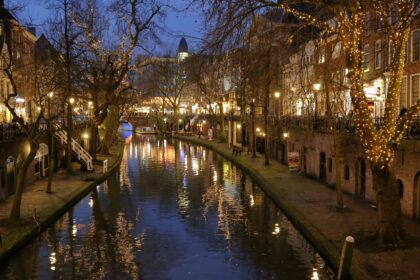Strolling along Amsterdam’s canals, you’re bound to notice a peculiar sight – buildings leaning at seemingly impossible angles. These crooked structures are an iconic part of the city’s landscape, but their tilt isn’t just an aesthetic quirk; it’s a testament to Amsterdam’s history and ingenious architecture.
Built on Swampland: Amsterdam was built on marshy, waterlogged soil. As a result, early builders couldn’t rely on solid ground for foundations. Instead, they employed long wooden piles driven deep into the soft earth to support their structures.
The Age Factor: Over centuries, these wooden piles can start to rot or shift, especially with fluctuating water levels. This uneven settling causes buildings to lean forward, backward, or sideways. Areas most affected include the Red Light District and along the main canals, where centuries-old merchant houses showcase this phenomenon prominently.
Intentional Lean? Some buildings, especially warehouses, were intentionally built with a slight forward tilt. This made it easier to hoist goods into upper floors using pulleys and beams protruding from the gables, preventing items from bumping into the facade.
Owners Take Action: While the crookedness adds character, building owners don’t take instability lightly. Modern renovations sometimes involve replacing old foundations with concrete or steel supports to stabilize the structures.
An Architectural Tell: When observing Amsterdam’s buildings, notice:
- Forward Leans: The most common tilt, often seen in canal houses
- Sideways Tilts: Less frequent, but can make for dramatic photos
- Gables: Look for hooks and beams protruding at the top, signs of buildings used for hoisting goods.
The Crooked City Experience:
The best way to experience the leaning buildings of Amsterdam is simply by walking along the canals. Notice how the buildings create a whimsical, almost fairytale-like effect with their reflections in the water. For a truly immersive view, consider a canal boat tour.
Amsterdam’s crooked buildings illustrate the city’s ability to adapt to its challenging environment. They serve as a quirky reminder of the ingenuity and perseverance that have shaped the city’s architectural and historical identity.



